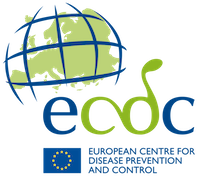Croatia: Recommended vaccinations
| General recommendation | |
| Recommendation for specific groups only | |
| Catch-up (e.g. if previous doses missed) | |
| Vaccination not funded by the National Health system | |
| Mandatory vaccination |
| Birth | Months | Years | ||||||||||||||||
|---|---|---|---|---|---|---|---|---|---|---|---|---|---|---|---|---|---|---|
| 2 | 4 | 6 | 12 | 15-18 | 6 | 7 | 14 | 18 | 19 | 24 | 45 | 60 | 64 | ≥ 65 | ||||
| Coronavirus disease (COVID-19)1 | COVID-192 | |||||||||||||||||
| tuberculosis | BCG3 | |||||||||||||||||
| diphtheria | D | D | D | D | D | d4 | ||||||||||||
| tetanus | TT | TT | TT | TT | TT5 | TT4 | TT | TT | TT | |||||||||
| pertussis | acP | acP | acP | acP | acP5 | acp6 | ||||||||||||
| poliomyelitis | IPV | IPV | IPV | IPV | IPV7 | IPV4 | ||||||||||||
| Haemophilus influenzae type b infection | Hib | Hib | Hib | Hib | ||||||||||||||
| hepatitis B | HepB8 | HepB | HepB9 | HepB | ||||||||||||||
| pneumococcal disease | PCV10 | PCV10 | PCV10 | |||||||||||||||
| measles | MEAS | MEAS7 | ||||||||||||||||
| mumps | MUMPS | MUMPS7 | ||||||||||||||||
| rubella | RUBE | RUBE7 | ||||||||||||||||
| human papillomavirus infection | HPV9 (F/M)11 | |||||||||||||||||
| influenza | IIV412 | IIV412 | ||||||||||||||||
Version:
Footnotes:
- https://www.hzjz.hr/sluzba-epidemiologija-zarazne-bolesti/koronavirus-najnovije-preporuke/
- https://www.hzjz.hr/wp-content/uploads/2021/11/Privremene-preporuke-za-cijepljenje-protiv-bolesti-COVID-19-–-jesen-2023._napomena.pdf
- Vaccination preferable at the time of delivery in the hospital. otherwise it should be given before 1 year of age.
- Given to students in grade 8
- DTaP or dTap.
- Temporary recommendation in response to the current pertusiss epidemic, Tdacp vaccination of all pregnant women in the second and third trimester and also vaccination of all close contacts of the newborn („cooconing“).
- Given to grade 1 students
- Infants of HBsAg-positive mothers receive Hepatitis B immunization with the immunoglobulins, in the hospital at birth.
- The second dose of HepB is given either at four or at six months of age (as part of the hexavalent vaccine). The pentavalent vaccine is administered either at four or at six months of age instead of the hexavalent.
- Introduced in 2019
- Gender-neutral (boys and girls) vaccination recommended in the 8th grade of school. 9-Valent. Catch-up campaign for boys and girls up to 25 years since 2019, depending on availability of HPV vaccine. for more information see https://www.hzjz.hr/sluzba-skolska-medicina-mentalno-zdravlje-prevencija/cijepljenje-protiv-humanog-papiloma-virusa-hpv-2/
- Recommendation for the 2023/24 season https://www.hzjz.hr/sluzba-epidemiologija-zarazne-bolesti/cijepljenje-protiv-gripe-za-osobe-s-povecanim-rizikom-od-razvoja-teskog-oblika-gripe-i-njezinih-komplikacija-2/
More information available at:
https://www.hzjz.hr/wp-content/uploads/2023/03/Provedbeni-program-obveznog-cijepljenja-u-2023..pdf https://www.hzjz.hr/sluzba-epidemiologija-zarazne-bolesti/odjel-za-cijepljenje/ https://www.zakon.hr/z/1067/Zakon-o-za%C5%A1titi-pu%C4%8Danstva-od-zaraznih-bolesti
HISTORICAL CHANGES
Measles, mumps and rubella:
1968: Measles vaccine introduced in the national childhood vaccination schedule.
1975: Rubella vaccine introduced in the national childhood vaccination schedule.
1976: MMR introduced in the national childhood vaccination schedule replacing the single antigen vaccines for first dose and introducing a mumps vaccination programme. In the same year, a rubella catch-up vaccination programme for 14-year old girls was also initiated.
1994: A second dose of MMR (MMR2) at 7 years of age replaced the single antigen vaccines for second dose. HepB vaccination introduced in the national childhood vaccination schedule to infants of HBsAg positive mothers.
1997: MMR2 was recommended at 12 years of age.
1999: The recommendation for MMR2 was reverted to 7 years of age.
Other:
1948: Diphtheria and BCG vaccines introduced in the national childhood vaccination schedule.
1955: Tetanus vaccine introduced in the national childhood vaccination schedule.
1959: Pertussis vaccine introduced in the national childhood vaccination schedule.
1999: Universal screening of pregnant women for HBsAg commenced and HepB vaccination introduced in the national childhood vaccination schedule to all children aged 12 years.
2002: Hib vaccination introduced in the national childhood vaccination schedule. First dose of polio vaccine switched from OPV to IPV and first dose of DTP vaccine switched from DTPw to DTPa.
2007: HepB vaccination introduced in the national childhood vaccination schedule to all infants.
2008: April. Universal switch to an all DTaP and all IPV schedule from a schedule that also included DTwP and OPV.
2015: Hexavalent vaccine introduced
2016: HPV vaccination for girls and boys at 14 years of age, free of charge. Change to DTaP booster (The second booster dose (fifth dose) is moved from 3 years to five years.DT booster at 6-7 years and at 19 years are discontinued.
Date of last update: 25 Jan. 2024
